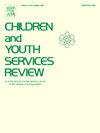Differences in sexual behaviors between sexual minority and heterosexual female youth with a substance use disorder who are experiencing homelessness
IF 2.4
2区 社会学
Q1 FAMILY STUDIES
引用次数: 0
Abstract
The purpose of this study was to examine differences in risky and protective sexual behaviors between sexual minority (SM) and heterosexual female youth with a substance use disorder (SUD) who are experiencing homelessness (YEH). This study uses baseline data from four randomized clinical trials of substance use interventions for YEH between the ages of 12–24 with a substance use disorder (N = 469). Meta-analytic methods were used to aggregate data across studies to estimate differences in sexual risk and protective behaviors. Female SM-YEH had a younger age at first sex, greater risk of lifetime casual sex, were less likely to use contraception during their first sexual encounter, and greater risk of having a STI than heterosexual YEH. Among female SM-YEH, older age was associated with greater utilization of condoms due to concerns about HIV and using condoms the last time they had sex compared to their heterosexual peers. Female SM and heterosexual YEH with a SUD had many similarities in sexual risk and protective behaviors. However, differences between female SM and heterosexual YEH were mixed regarding who was at greater risk, suggesting their unique context may play a role in understanding engagement in risky and protective sexual behavior in addition to sexual orientation.
求助全文
约1分钟内获得全文
求助全文
来源期刊

Children and Youth Services Review
Multiple-
CiteScore
6.30
自引率
6.10%
发文量
303
期刊介绍:
Children and Youth Services Review is an interdisciplinary forum for critical scholarship regarding service programs for children and youth. The journal will publish full-length articles, current research and policy notes, and book reviews.
 求助内容:
求助内容: 应助结果提醒方式:
应助结果提醒方式:


